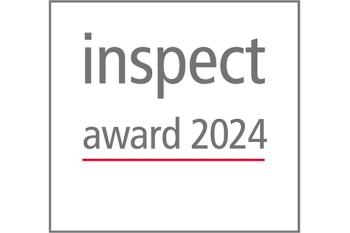Speed Booster
Networking Technology Doubles the Speed of GigE Interfaces
Allied Vision Technologies (AVT)'s new range of GigE cameras, the Prosilica GX-Series, combines high-speed and high-resolution. Running at 240 MB/s data rate, the GX-Series are the fastest GigE Vision compliant cameras in the world. - How does that work?
To achieve a rate of 240 MB/s the GX-Series use Link aggregation (LAG), or IEEE 802.3ad, a networking technology that uses multiple Ethernet ports in parallel to increase the link speed beyond the limits of any one single port. Link aggregation allows the transfer of much more data than one single port can deliver. The LAG technology has been used in IT networking for years and is supported by a wide range of standard Ethernet hardware (switches, interface cards, etc.). For any application's point of view, link aggregation offers an inexpensive way to set up a high speed network while allowing the network speed to grow incrementally as demand increases without having to replace hardware or add more cabling.
In the case of the GX-Series, the host computer sees the camera as though there is only one GigE cable connected, even though there may be two. When the camera is connected by two cables to the host computer, the host computer only sees it as one connection at twice the normal speed (240 MB/s). The GX-Series can also work at half the speed (120 MB/s) using a single cable. The GX-Series operate with standard CAT-5e Ethernet cables.
Unique Features
The GX-Series introduces two new features: video auto-iris control and three-axis motorized lens control. The three-axis motorized lens feature is integrated into the GX camera hardware to control lens focus, iris and zoom directly and remotely via the AVT/Prosilica GigE Software Development Kit without the use of an external control box.
The GX-Series also include all the features of the GE-Series cameras including external trigger and sync I/O, RS-232 peripheral port, advanced binning modes, offset controls, non-volatile configuration memory, event recorder capability, pre-trigger recording, programmable strobe functions, multicasting, configurable IP addresses, 128 MB resend/image buffer, auto-exposure, auto-gain and auto-white balance controls.
Camera Family
Four models are currently available, the fast Megapixel GX1050 (120 fps), the 2 Megapixel 2/3˝ optical format GX1660 (60 fps), the 2 Megapixel HD resolution GX1910 (60fps) and the 8 Megapixel GX3300 (15 fps). A 4 Megapixel model will be released in 2010.
All GX-Series models feature high performance progressive scan Kodak KAI CCD sensors. These sensors (KAI-01050, KAI-02050, KAI-02150 and KAI-08050) offer excellent image quality, high sensitivity, electronic shutter, low noise, anti-blooming, improved smear performance, high quantum efficiency and fast frame rates. The 14 bit A-D provides high quality images to meet the most demanding applications such as machine vision, high-speed industrial inspection, avionics, traffic monitoring, license plate reading (ANPR), public security and intelligent transportation systems (ITS).
Available in either monochrome or color models, the GX-Series are fitted with a C-mount with adjustable back-focus and provide uncompressed digital output in Mono8, Mono16, Bayer8, Bayer16, RGB24, YUV411, YUV422, YUV444, BGR24, RGBA24 and BGRA24 image formats.
All GX-Series models offer full compatibility with the AVT/Prosilica GigE Software Development Kit.
Contact
Allied Vision Technologies GmbH
Taschenweg 2A
07646 Stadtroda
Germany
+49 36428 / 677- 0
+49 36428 / 677- 28








